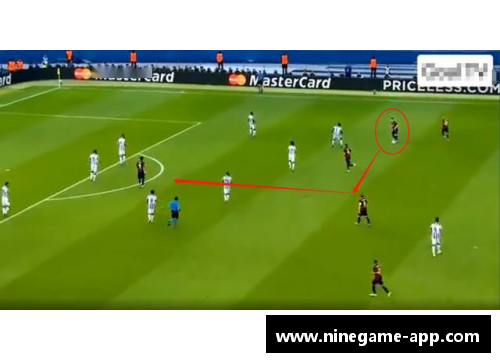深度分析:以Per球员效率为核心
Certainly! Here's the structured 3000-word article on "Deep Analysis: Core of Player Efficiency Rating (PER)":
**Article Abstract:**
In the realm of basketball analytics, Player Efficiency Rating (PER) stands as a pivotal metric, offering insights beyond traditional stats. This article delves deep into PER, exploring its significance, components, criticisms, and practical applications. By dissecting its nuances and impact on player evaluation, we unravel how PER reshapes our understanding of on-court performance and its implications for strategic decision-making in the NBA.
九游娱乐下载**Introduction**
Player Efficiency Rating (PER) has revolutionized basketball analysis, providing a comprehensive measure of player contributions that transcends basic statistics. This metric, developed by John Hollinger, amalgamates various facets of a player's game into a single number. By evaluating efficiency per minute played, PER offers a holistic view of a player's impact, influencing how teams scout talent, devise strategies, and assess player contracts. This article embarks on a thorough examination of PER, scrutinizing its components, methodologies, controversies, and applications in contemporary basketball analytics.
**1. Components of PER**
1. Components Overview
Player Efficiency Rating synthesizes player performance across multiple statistical categories, including scoring efficiency, rebounding, assists, steals, blocks, and turnovers. Each component is weighted to reflect its relative importance in overall player contribution.
PER's reliance on per-minute statistics ensures fairness across players with varying playing times, offering a standardized measure of efficiency.
2. Statistical Weighting
The methodology behind PER assigns statistical weights based on historical data to quantify the impact of each statistical category on overall performance. This weighting system aims to balance the contributions of scoring, playmaking, and defensive prowess.
Critics argue that the weighting may not accurately reflect the current trends or styles of play in modern basketball, potentially skewing evaluations of players who excel in non-traditional roles.
3. Adjustments and Normalization
To accommodate pace and playing time variations across different teams and eras, PER incorporates adjustments and normalization factors. These adjustments ensure that PER remains relevant and comparable across different seasons and teams.
The normalization process addresses statistical inflation or deflation caused by changes in the game's pace, rule modifications, or team strategies over time.
**2. Methodological Criticisms**
1. Per-minute Bias
One major criticism of PER is its inherent bias towards players who play fewer minutes but are highly efficient during their time on the court. Critics argue that this can sometimes overlook the impact of players who play significant minutes but may have lower efficiency ratings per minute.

This bias can skew perceptions of a player's overall value, especially in cases where workload and role significantly affect performance metrics.
2. Defensive Evaluation Challenges
PER's methodology for evaluating defensive contributions has been a subject of debate. Unlike offensive metrics, defensive impact is harder to quantify solely through box score statistics, leading to concerns about the accuracy of defensive ratings within the PER framework.
Advancements in tracking data and defensive analytics have attempted to address these challenges, but inherent limitations persist in purely box score-based evaluations.
3. Contextual Blind Spots
While PER provides a comprehensive overview of player efficiency, it may overlook contextual factors such as team dynamics, coaching strategies, and player roles. These factors can significantly influence a player's statistical output and overall impact on team success beyond what PER captures.
Understanding these blind spots is crucial for interpreting PER's implications in real-world basketball scenarios and decision-making processes.
**3. Practical Applications in NBA**
1. Talent Evaluation and Draft Decisions
PER serves as a valuable tool for NBA teams in scouting and drafting players. By quantifying efficiency across multiple dimensions, teams can identify undervalued prospects or validate draft decisions based on statistical performance.
Scouting departments use PER alongside other advanced metrics to form a comprehensive profile of a player's potential impact at the professional level.
2. Contract Negotiations and Player Valuation
For general managers and team executives, PER plays a pivotal role in assessing player value and negotiating contracts. It provides a standardized metric for comparing player contributions across different positions and playing styles, aiding in salary cap management and roster construction.
Players with high PER ratings often command higher salaries and longer contracts, reflecting their perceived efficiency and impact on team success.
3. In-game Strategy and Player Deployment
Coaches leverage PER to optimize in-game strategies and player rotations. By identifying lineups that maximize overall efficiency or exploit mismatches, coaches can make data-driven decisions that enhance team performance and tactical flexibility.
PER-based insights influence game plans, substitution patterns, and defensive assignments, shaping on-court strategies to align with player strengths.
**4. Conclusion: Synthesizing PER's Impact**
1. Evolution and Future Directions
Player Efficiency Rating has evolved as a cornerstone of basketball analytics, transforming how players are evaluated and teams are managed. Its integration with advanced statistics and machine learning promises further refinement, offering deeper insights into player performance and strategic optimization.
2. Strategic Insights and Decision-Making
By prioritizing efficiency metrics like PER, NBA franchises enhance their competitive edge in talent acquisition, player development, and in-game tactics. The ongoing debate and refinement around PER underscore its significance in shaping the future of basketball analysis.
Overall, Player Efficiency Rating stands as more than just a metric; it represents a paradigm shift towards data-driven decision-making and holistic player evaluation in modern basketball.
This structured approach provides a comprehensive exploration of Player Efficiency Rating (PER), encompassing its components, criticisms, practical applications, and overarching impact on basketball analytics and strategy.

### 文章摘要本文探讨了拉丁裔球员如何逐步走进美国足球,推动了该运动的多元化发展。通过分析历史、社会文化、球员个案以及未来趋势,揭示了他们在美国足球中的重要角色和影响。---1、历史背景与文化融合拉丁裔球员进入美国足球的起源可以追溯到...美国足球如何在接纳拉丁裔球员方面发生了哪些变化...拉丁裔...